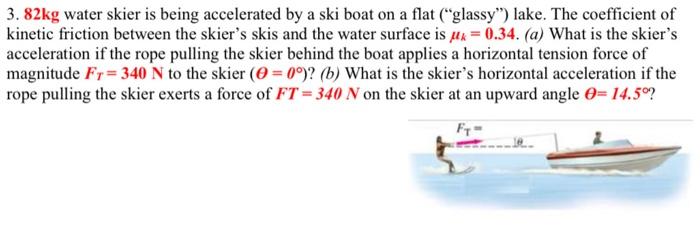3.82 kg water skier is being accelerated by a ski boat on a flat ("glassy") lake. The coefficient of kinetic friction between the skier's skis and the water surface is μk = 0.34. (a) What is the skier's acceleration if the rope pulling the skier behind the boat applies a horizontal tension force of magnitude FT = 340 N to the skier (θ = 0∘)? (b) What is the skier's horizontal acceleration if the rope pulling the skier exerts a force of FT = 340 N on the skier at an upward angle θ = 14.5∘?
